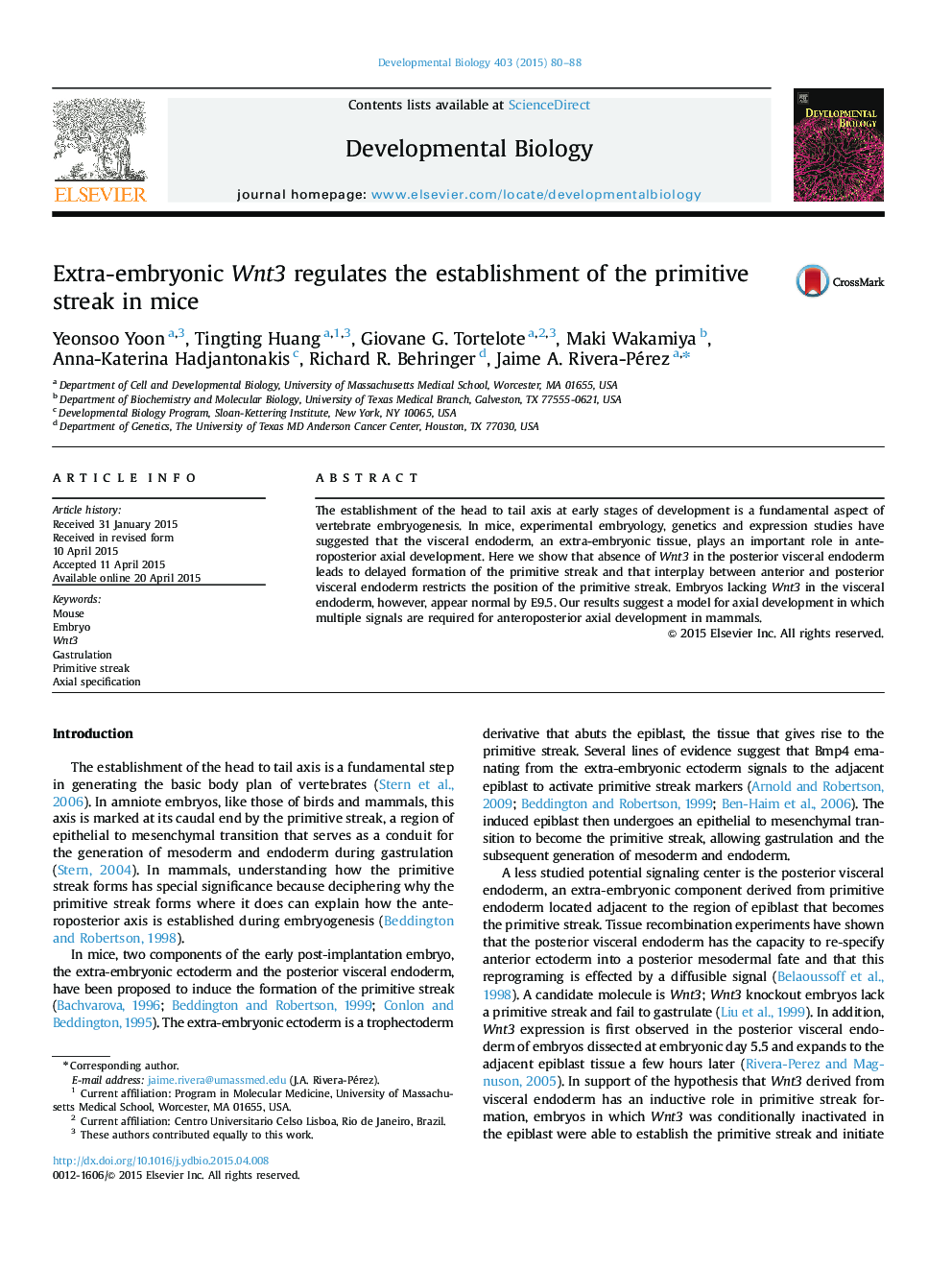| Article ID | Journal | Published Year | Pages | File Type |
|---|---|---|---|---|
| 10931494 | Developmental Biology | 2015 | 9 Pages |
Abstract
The establishment of the head to tail axis at early stages of development is a fundamental aspect of vertebrate embryogenesis. In mice, experimental embryology, genetics and expression studies have suggested that the visceral endoderm, an extra-embryonic tissue, plays an important role in anteroposterior axial development. Here we show that absence of Wnt3 in the posterior visceral endoderm leads to delayed formation of the primitive streak and that interplay between anterior and posterior visceral endoderm restricts the position of the primitive streak. Embryos lacking Wnt3 in the visceral endoderm, however, appear normal by E9.5. Our results suggest a model for axial development in which multiple signals are required for anteroposterior axial development in mammals.
Related Topics
Life Sciences
Biochemistry, Genetics and Molecular Biology
Cell Biology
Authors
Yeonsoo Yoon, Tingting Huang, Giovane G. Tortelote, Maki Wakamiya, Anna-Katerina Hadjantonakis, Richard R. Behringer, Jaime A. Rivera-Pérez,
